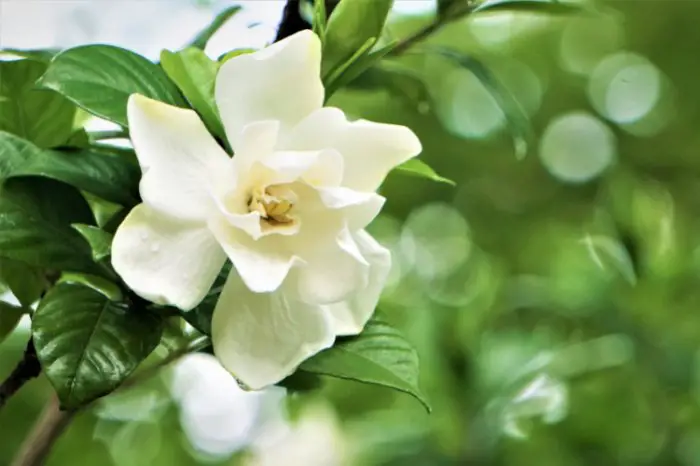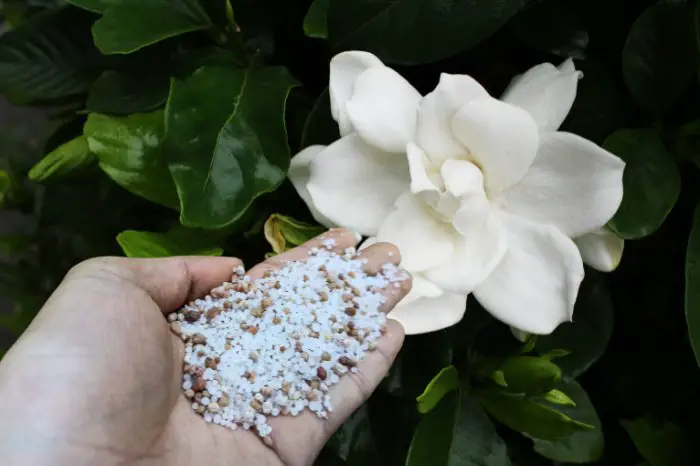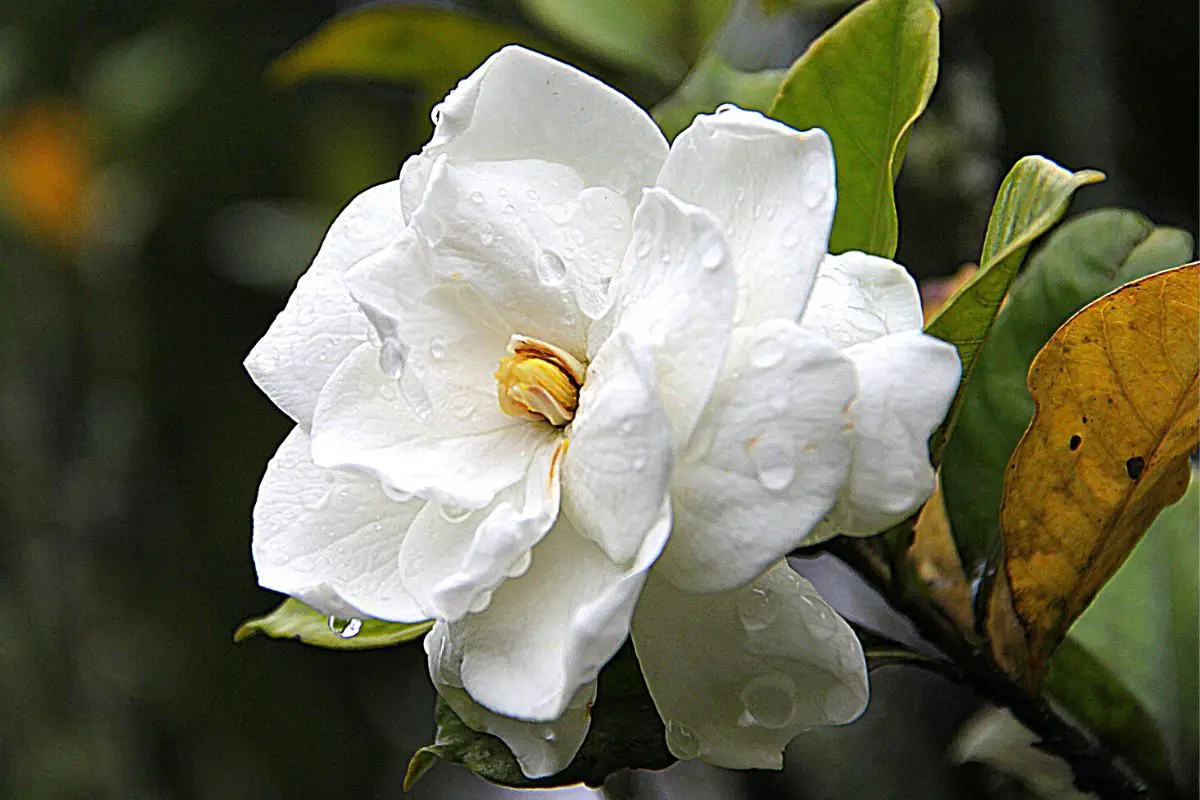Last Updated on January 4, 2023 by Cristina
Gardenias are an attractive genus of plants that are grown around the world. Why are the leaves of my gardenia turning yellow? Read on to find out how to diagnose, and repair such symptoms – if need be.
What Is A Gardenia?
There are many species of Gardenia – close to 130 in total and counting. However, more often than not, if you are talking about a Gardenia, the chances are it is one of the many cultivars of Gardenia jasminoides. This plant is actually named after its beautiful fragrance which is jasmine-like.
Gardenias are quite varied in growth habits, but the reason we grow them is for their beautiful foliage and flowers. They are in the same awe-inspiring category as a rose. The plants are just exceptionally beautiful. The history of this plant as a cultivated species is similarly ancient, having been part of the Chinese gardening culture for over a thousand, and probably many more years.
These plants are relatively easy to grow if you get their conditions right, but, at times they can become poorly, and in some cases, their leaves turn yellow prematurely.

What Causes Gardenia Leaves To Turn Yellow?
Why are the leaves of my gardenia turning yellow you may ask? There are a number of causes, and we will now go through the most common ones and list a few simple fixes.
Firstly, What Do We Call Yellow Leaves On Gardenias? In plants, the yellowing of leaves is a symptom of the loss of chlorophyll – the green pigment in chloroplasts. If leaves are yellow, it means that they are either inefficient or unable to perform photosynthesis depending on how far the decline in pigmentation has gone. We term the loss of chlorophyll “Chlorosis” hence our question, ” Why are the leaves of my gardenia turning yellow?” could be far more easily written as, “Why is my gardenia chlorotic?”
Yellow Leaves Caused By An Incorrect Soil pH
Soil pH is very important to plants – with different plant species being adapted to different soil pH. If the soil pH is 7, this is called neutral soil, and if the pH is above this it is alkaline, or basic, and a soil pH below 7 is acidic. Gardenias like a soil pH of 5 (acidic) to 6,5 (slightly acidic). This is a relatively low soil pH and a lot of other common garden plants will not thrive at this pH of the soil.
If the soil pH is too high for a gardenia, which is commonly the case, certain mineral ions such as zinc, iron, and magnesium will not be available to the gardenia. Luckily it is relatively easy to correct soil pH and also to get minerals such as zinc, iron, and magnesium into the plant’s leaves quickly. We will cover this in a bit.
I generally do not advise using one of these little garden pH dipstick pH meters to measure soil pH. They are wildly inaccurate – by up to two ph units, and are basically garbage in garbage out readings. Send your soil sample to a local laboratory – just google “soil analysis laboratory near me” and you will find the one the local farmers use. They will, for a small fee, send you a soil pH reading. This can then help you plan what to do to your soil to solve problems.
Most Common Soil pH Metal Ion Deficiencies
Iron – Why Are The Leaves Of My Gardenia Turning Yellow?
This is the most common and easy-to-identify metal ion deficiency. Leaves get yellow from the tip and then you eventually find that the green is closest to the veins of the leaves and the rest goes yellow. The stems will go yellow last.
Magnesium
This is an easy deficiency to diagnose. If there is not enough magnesium to go around, plants tend to move from old leaves to new leaves. This means that if you have a magnesium deficiency you will tend to notice the older leaves at the base of the plant go yellow, and then new leaves are green – you will see quite a few yellow leaves dropped around the base of your plant.
Zinc – Why Are The Leaves Of My Gardenia Turning Yellow?
This deficiency causes leaves to grow in a stunted way, and not lengthen properly. The leaves will also go yellow with time.
Take Out Time to Also Read:
Yellow Leaves Caused By Water Problems
In addition to the above soil chemistry problems, we must never overlook the problems that too much or too little water can cause! Ironically, some of the symptoms of too little water (wilting leaves) are the same as symptoms of overwatering (wilted leaves).
These simple garden meters can give you an indication of soil moisture. Do not trust the pH meters on these budget units, however – these are wildly inaccurate.
If gardenias are in the correct soil – acidic, compost-rich, well-draining soil, they require weekly watering to the point where the soil is wet. After this it helps to allow the soil to dry slightly but not get bone dry – this cyclical change in soil moisture helps to move nutrients in and out of the soil and organic matter, and drives a cycle of nutrient flow into the plant that will reduce leaf yellowing in general.
If the soil is too wet, the roots will rot and the plant will naturally get yellow leaves. If the soil is too dry, the plant will eventually die and in so doing get yellow leaves.
ALANMOND Plant Water Meter, 3-in-1 Soil Moisture/Light/pH Tester for Plants
How To Treat Yellow Leaves On Gardenias
Well, you asked why are the leaves of my gardenia turning yellow, and now we know a number of reasons why this could happen. Treating starts with a simple diagnostic process.
Soil Moisture
Check if the soil is very dry or very wet. If it is dry, water the plant. If the plant starts to look better after two weeks, you have solved your problem. If the soil is very wet, and your plant is yellow, let the soil dry out. After the soil has dried out, you can then water it weekly, and just enough to make the soil wet. Let it nearly dry out in between waterings and see if the plant starts to look better.
Soil pH – Why Are The Leaves Of My Gardenia Turning Yellow?
If you have ascertained that the soil moisture is now fixed, progress to soil pH. Send a soil sample off to get tested. If the pH is not within the 5-6.5 target range you have probably diagnosed your problem. You can easily correct soil pH by adding a bit of ammonium sulfate. I tend to advise against drastic measures such as adding sulfur. Having done this myself, and turned a section of ground into a wasteland for a season, I find it is a complex additive and probably beyond the scope of the small-time gardener. I use ammonium sulfate to change the pH slightly. It is a good source of nitrogen as well.
Fertilizer For Gardenias With Yellow Leaves
Ammonium sulfate can be used to achieve a small shift in pH – say from 7 to 6.5 moving your soil into an optimal Gardenia range. Follow the instructions on the mixture you buy. I mix ammonium sulfate in a bucket and water it onto the soil – this allows the solution to penetrate the soil, and soil bacteria will then work on it and cause the pH shift. If you apply it to the surface, much of the pH-changing characteristics will just be released into the atmosphere. Remember your mulch layer also helps lock in pH change with ammonium sulfate by protecting against too much gas loss into the atmosphere.
Correcting Iron, Magnesium, And Zinc Deficiencies
I find the easiest short-term fix is to find a chelated foliar spray. Chelated minerals have had a chelating agent bonded to them that keeps them soluble under a wider range of conditions. A foliar application, applied as per the instructions, of a product will help to correct short-term issues while the ammonium sulfate suggested above works with your soil microbes to gradually lower the soil pH.

In Conclusion – Why Are The Leaves Of My Gardenia Turning Yellow?
If your gardenia plant has leaves that are turning yellow and the soil is very dry, water it! If the plant has wet soil and leaves turning yellow, do not water it for a while, and then water it weekly. If this solves the problem, your gardenia was either being underwatered or overwatered.
If the above solutions do not make a difference, we need to measure soil pH. If the pH is above 6.5, you can add ammonium sulfate to reduce soil pH. This will slowly make mineral ions such as iron, calcium, and magnesium available to your plant. However, adding a chelated mineral foliar feed to your repair system will help, as this rapidly gets the essential metal ions to the leaves where they are needed.
Following the above diagnostic procedure should get your gardenia green and flourish!
Dr. Garth A. Cambray is a Canadian/South African entrepreneur and beekeeper with 28 years of experience in apiculture and specializes in adding value to honey. His Ph.D. research developed a new advanced continuous fermentation method for making mead that has resulted in a number of companies globally being able to access markets for mead. His company, Makana Meadery, exports honey mead to the USA where it is available to discerning connoisseurs. He has also developed technologies to commercially manufacture organic honey vinegar in Zambia for export globally. He holds a few patents globally in the ethanol industry and believes in technology and knowledge transfer for human development and environmental sustainability. One of his proudest achievements is the fact that the wind farm he started at one of his old apiary sites has essentially made his hometown carbon neutral.



